HeiJaLaLand
How neighbourhood initiatives create biodiverse public spaces
HeiJaLaLand Timeline
04th of August 2021
Birgit and Klaus send out messages to the neighbourhood around Heinersdorfer, Jacobsohn and Langhansstraße, per email and letterbox, proposing to meet two weeks later on the 14th of August at 3pm at their crossing point. They want to discuss how to improve the area centred on this dangerous intersection, we had begun to call it five points after the notorious New Yorker precedent.
14th of August 2021
Birgit and Klaus wait on a rainy afternoon for the arrival of other neighbours. One person, Michelle, turns up soon after 3pm. Now they are three and move around the crossing, trying to look conspicuous and waving to passers-by in the hope that each one could be another interested neighbour. At 4pm, it becomes clear that no one else is coming, and the small group discusses whether to continue or not. It’s hard to meet if there’s no place to meet, this neighbourhood needs a place for neighbours to make community!
This realisation gives them the energy to enlarge their ambition from just trying to make things less dangerous to a determination to usher a physical public neighbourhood space into life.
Friends at c-space (https://c-space.eu/) loan out their mobile parklet[1] to them for the 3rd of September, and they occupy the intersection with it. As many politicians from as many parties as possible are invited. They print drawings of the crossing for all to put their ideas down, they bring drinks and colouring pencils. They put a flyer together inviting people to come to the intersection between 4 and 8pm, and put it into as many letterboxes as they can manage.
[1] Parklets are designed to provide a public place for passers-by to relax and enjoy the atmosphere of the city, especially in places where urban spaces are lacking, and the existing footpaths are too narrow to accommodate vibrant street life activities. https://en.wikipedia.org/wiki/Parklet
03rd of September 2021
The street to the people! Let's make this intersection a place!
The big day arrived, and the weather was wonderful. We push the parklet to the centre of the intersection. Printouts of the crossing in A3 are distributed along with bunches of pencils. A kids' corner with brighter pencils and markers is set up. Beer banks and two long tables on either side of the parklet invite passers-by to linger. Bunting is hung from the street lights, and we wait. And the people came. They came in droves, staying to discuss the things they were interested in, worried about, and prepared to help with. Many politicians turned up, from the local to the city, state, and national levels—of course, it was a week before the general election on the 15th of September (I wish I could say that we had planned it that way).
There were discussions, drawings, and contact details added to the list of interested neighbours. We ran out of paper as the list grew longer. The discussions went on long into the night; people stayed, politicians stayed, and ideas were born. Eventually, at 10 PM, we had to push the parklet back before darkness fell. The place we created was fleeting, but it was clear that it was needed. We now know more neighbours and can work together to improve the neighbourhood for everyone.
A small group of us got together at this busy, loud, and dangerous crossroads in Berlin Weissensee. We organized the parklet, a platform with benches, tables, and plants on wheels that takes up the same space as a car, on loan from another great neighbourhood organization called c-space. We brought plenty of printouts and drawing tools so that everyone could make sketches and write about what they thought should happen there. We were there at 4 PM and were overwhelmed by the amount of interest from neighbours. We stayed until after dark, chatting and sketching. We had forgotten that the general elections were coming up, but we soon remembered when we were visited by all the local candidates and even some national ones. It was amazing to see how enthusiastic people who had been living with this hellish crossroads for years were to finally do something about it.
10th of September 2021
Visit of the area with the mayoral candidate of the greens. Introduction of the idea of “probeplätze” or public spaces in rehearsal. Could we occupy a place temporarily and show that it has value as a public space?
15th of September 2021
Distribution and communication.
The sketches, statements, and signatures gathered, signed and drawn on the 3rd of September were submitted to the authorities, politicians and other neighbourhood initiatives, and anyone who could help, from the local to the state level.
2021 Corona Lockdown Autumn and Winter 2021
Germany goes into lockdown again, but we now know how to work with video conferencing and meet once a month to consult each other. We have only one rule, the meetings last less than an hour! The group has grown and neighbours have organised themselves into groups working on issues they are concerned with where people get together to discuss and try to propose solutions to things they are interested in and / or are better qualified to approach. The groups are movable, and you can belong to as many groups as you like but go something like this,
exploring politics of safety for children in the public realm,
finding out who owns what in the area and what are the plans, where is the public space, planting trees in the street, unsealing the ground,
occupying more of the places now devoted to cars.
Exploring forms of public disobedience
How can better signage improve the public realm
Reading the proceedings of the different city meetings, deciding which ones to attend.
2022 – Emerging from Lockdowns - Discovering HeiJaLaLand
The Zoom meetings continue once a month, smaller actions continue and pressure is put on politicians, through emails and meeting requests. The not glamorous but very important part of keeping the initiative alive. The problem remains of place, there is no place to meet that is public land.
One group in our initiative discovers that a piece of land that had been bought by private investors has now been acquired by the city through a trustee company. Further investigation finds that there are plans to transform it into a playground.
Experience shows that these plans take at least 5 years to emerge. We decide to bring this area to the attention of the city council. Lucio makes a model, and we go and walk around the city council meetings showing it and talking about it to anyone who is interested.
Likewise, we meet a politician who tells us, just do it – we do
5th of May 2022
We enter the site with other residents and start to clear it. Many people turn up, many people work, many people talk and there are kids everywhere. The police come by later, we talk, we explain that it is a neighbourhood initiative. We show the model, they see the neighbours working together. They call their superiors, they call us aside and tell us that we will be tolerated as long as we don’t cut down any trees. Surprise, and first lesson, it’s worth trying something out, sometimes there will be less resistance than you expect.
25th of May 2022–We enter HeiJaLaLand for the Pankower Environmental Award 2022
Application "Pankow picobello" – Pankow Environmental Award 2022
We are active as a purely voluntary neighbourhood initiative that was created following the preliminary investigations on the Langhansstraße redevelopment area. We are trying to make our residential area on the corner of Langhansstraße, Heinersdorfer Straße, Jacobsohnstraße a place that offers people an environmentally friendly, safe and relaxed environment, inviting neighbours to communicate, forge ideas and act together. The group consists of old and young, long-time residents and newcomers, families with children of all ages and different backgrounds.
The initial situation
In front of our eyes in Pankow/Weißensee lies a neglected (publicly owned) property, easily visible and also accessible. On closer inspection, it is a wasteland with hills, probably made up of ruins or building rubble of various origins, mostly overgrown with trees and shrubs, in between rubbish and deposits of all kinds - a mountain of rubbish that has been created over tens of years, stretching from Langhansstraße to Jacobsohnstraße. (see photos) But in this raw state, which has been developed over many years, it is also a small oasis in a busy, corner lacking in natural and unsealed spaces. A retreat for birds and numerous insects, as well as other small animals.
Our project
We counteract further littering by removing residual and hazardous waste, taking into account careful waste separation and recycling options. As far as possible, ruins (many bricks) will be included in a preliminary design of the square (see model). As a side effect, the participating children gain instructive practical experience with the waste problem and an environmentally friendly design of urban areas. We work on the preservation and care of trees, shrubs and green spaces. In doing so, we pay particular attention to the preservation of populations of small animals and create new habitats, e.g. for bats. Such green spaces are evaporation surfaces and thus cool the heated city air on hot summer days. An important recreational aspect for old and young. The resulting near-natural space, as has long been scientifically proven, prevents the further development of a rubbish dump in a dense residential area through maintenance and observation by the neighbourhood, which would not only reduce the quality of housing, but also damage general health. We are thus opening up a green space for the residents, which can be seamlessly transferred to the creation of a playground in its understanding as a rehearsal site, as the district's plans envisage.
Volunteer approach
All costs of the campaign are currently covered by self-help and donations.
15th of June 2022
Heijaland wins the Pankower Environmental Award 2022!
15th of August 2022,
Katya Romanova publishes a soundscape featuring HeiJaLaLand
https://c-makers.de/entry/brachland/
September 2022 - HeiJaLaLand is on Google Maps
October 2022 - HeiJaLaLand is on Instagram
Instagram HeiJaLaLand- https://www.instagram.com/heijala_land.berlin/
11th November 2022
HeiJaLaLand celebrates its first Lantern Festival (Lanternenfest) -
Lucio organises contributions by artists from all over Berlin and beyond.
The Neighbourhood Initiative is included in all discussions by the city relating to HeiJaLaLand. So begins the long and continuous work to communicate the value of this oasis of biodiversity in a neighbourhood that its fast losing all of its open green spaces.
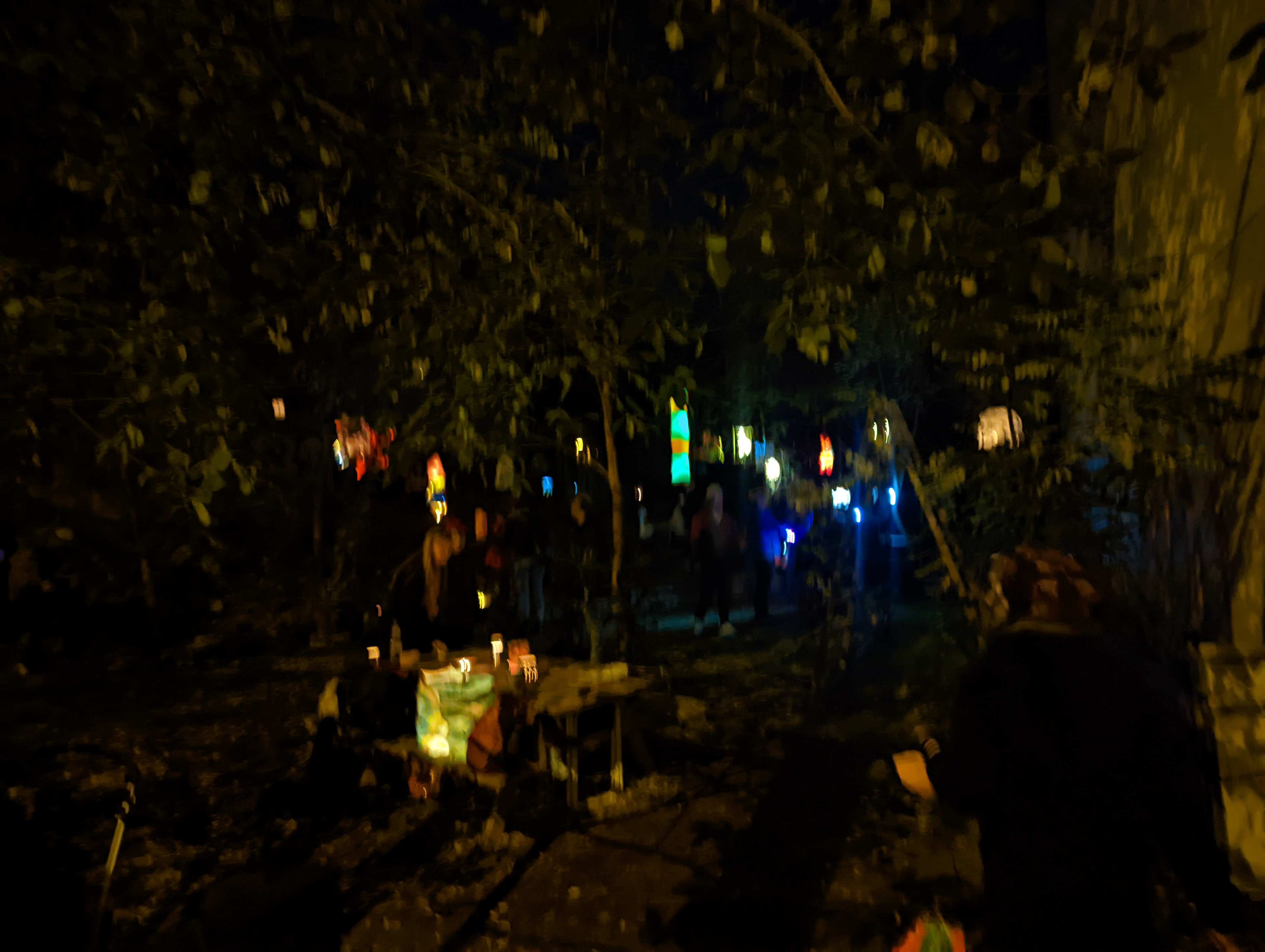

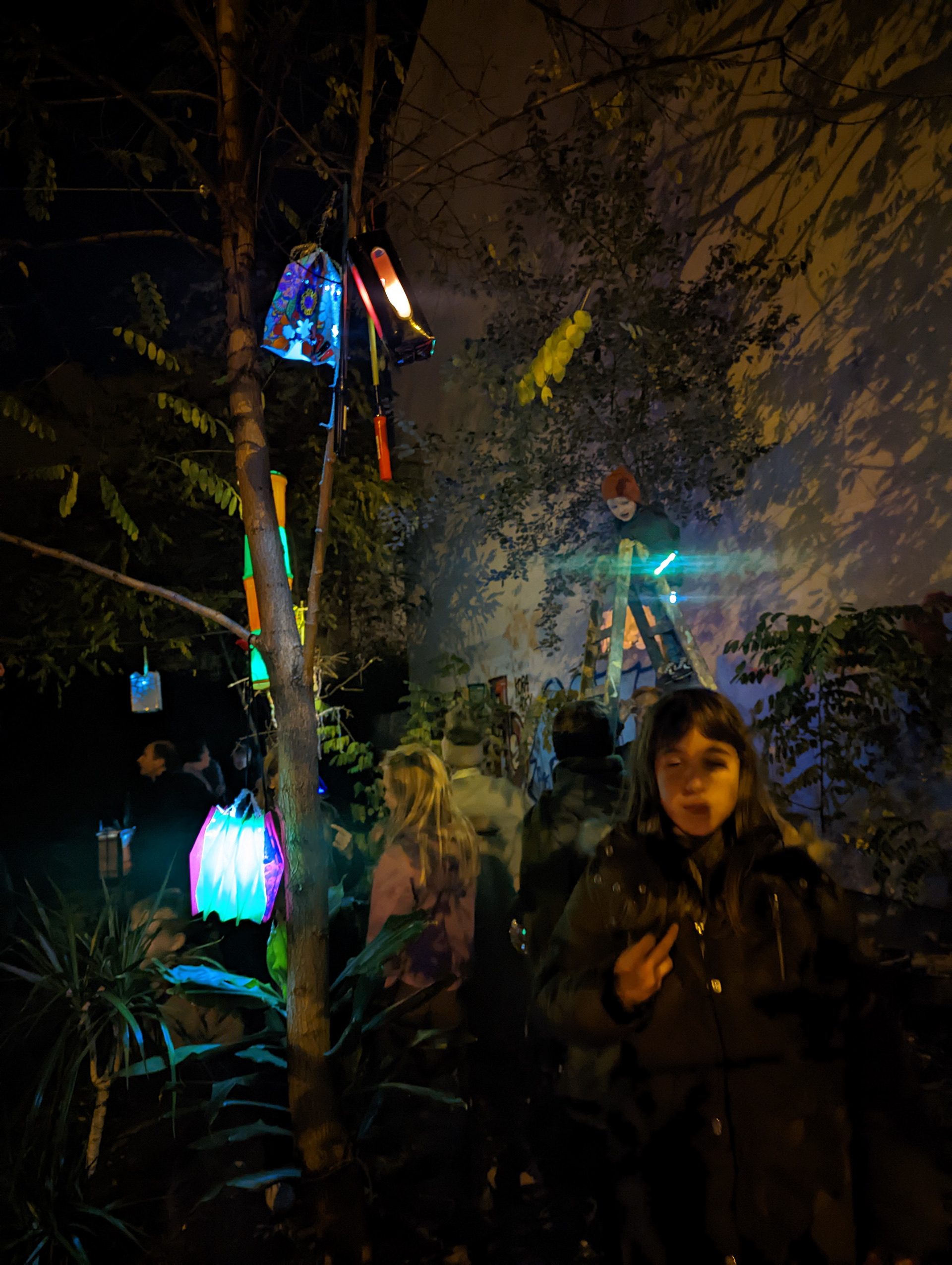
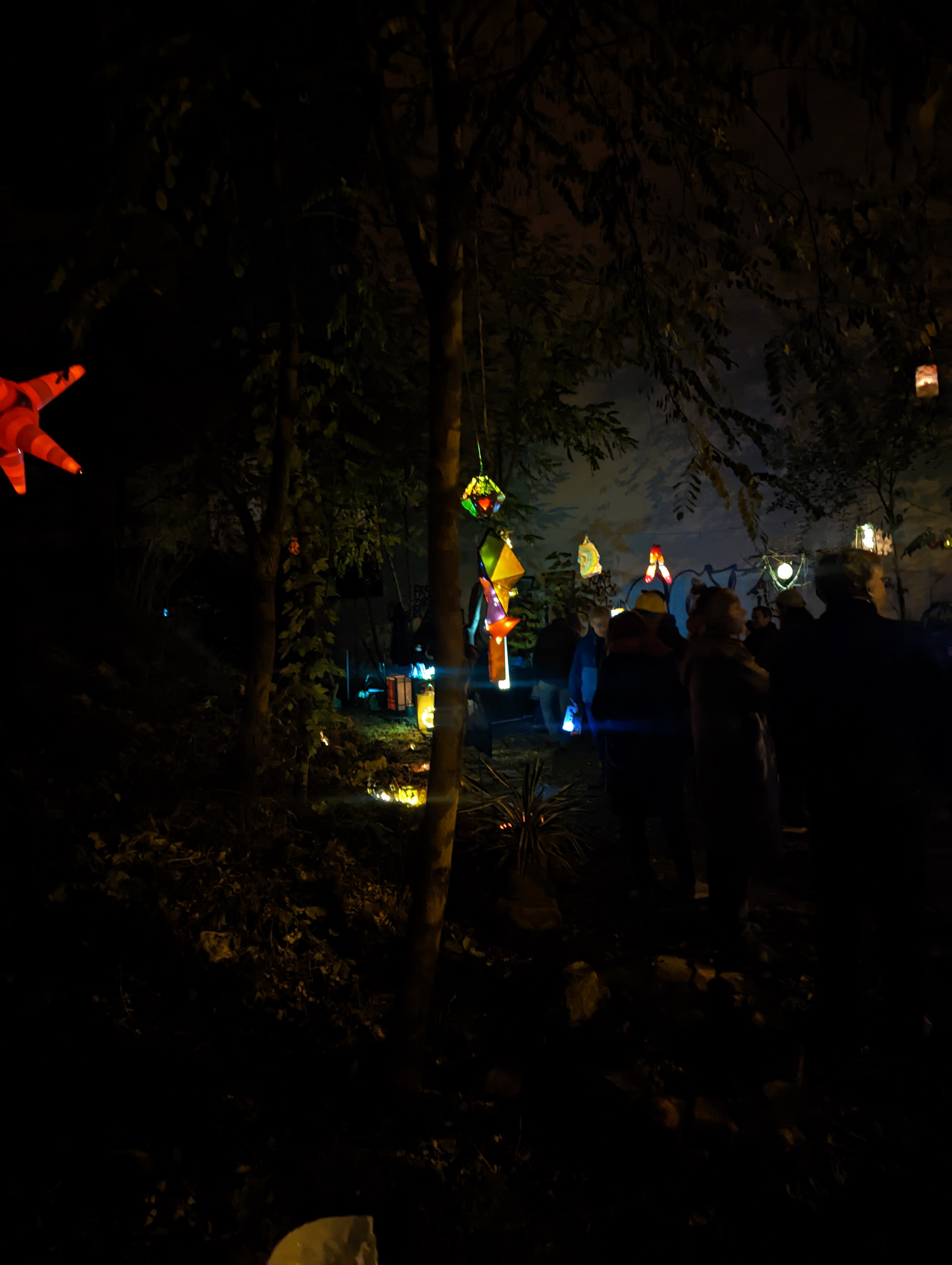
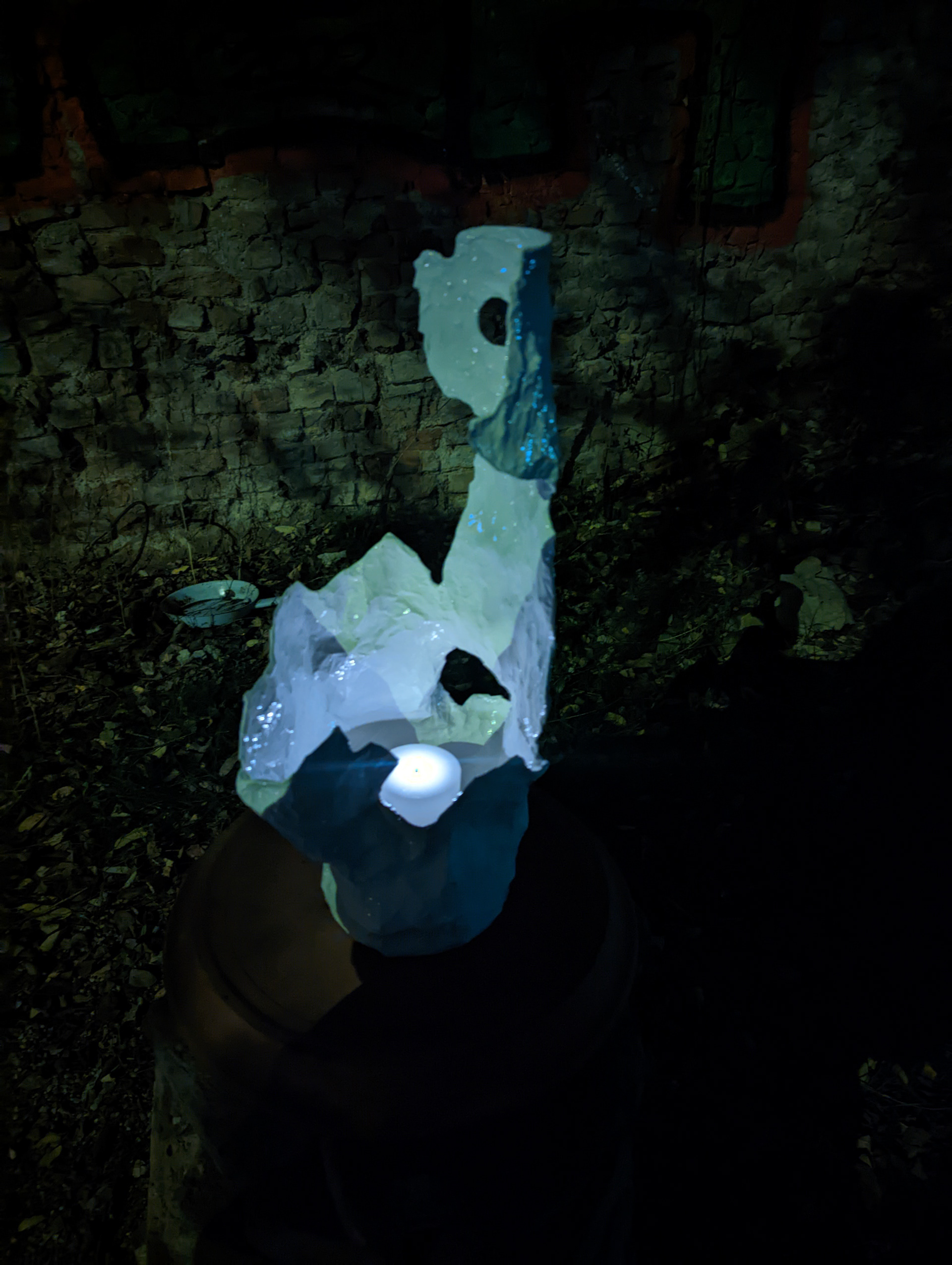

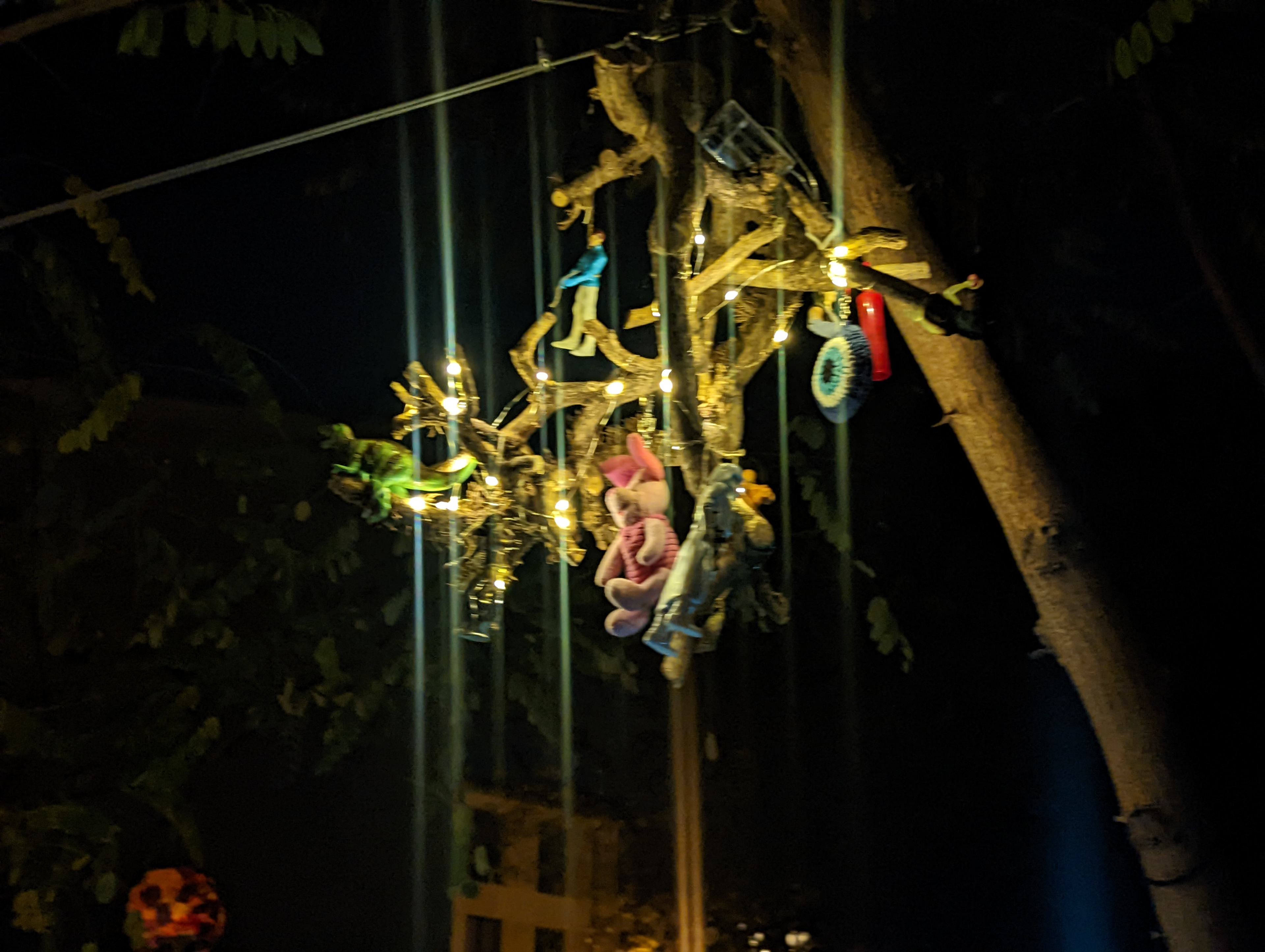
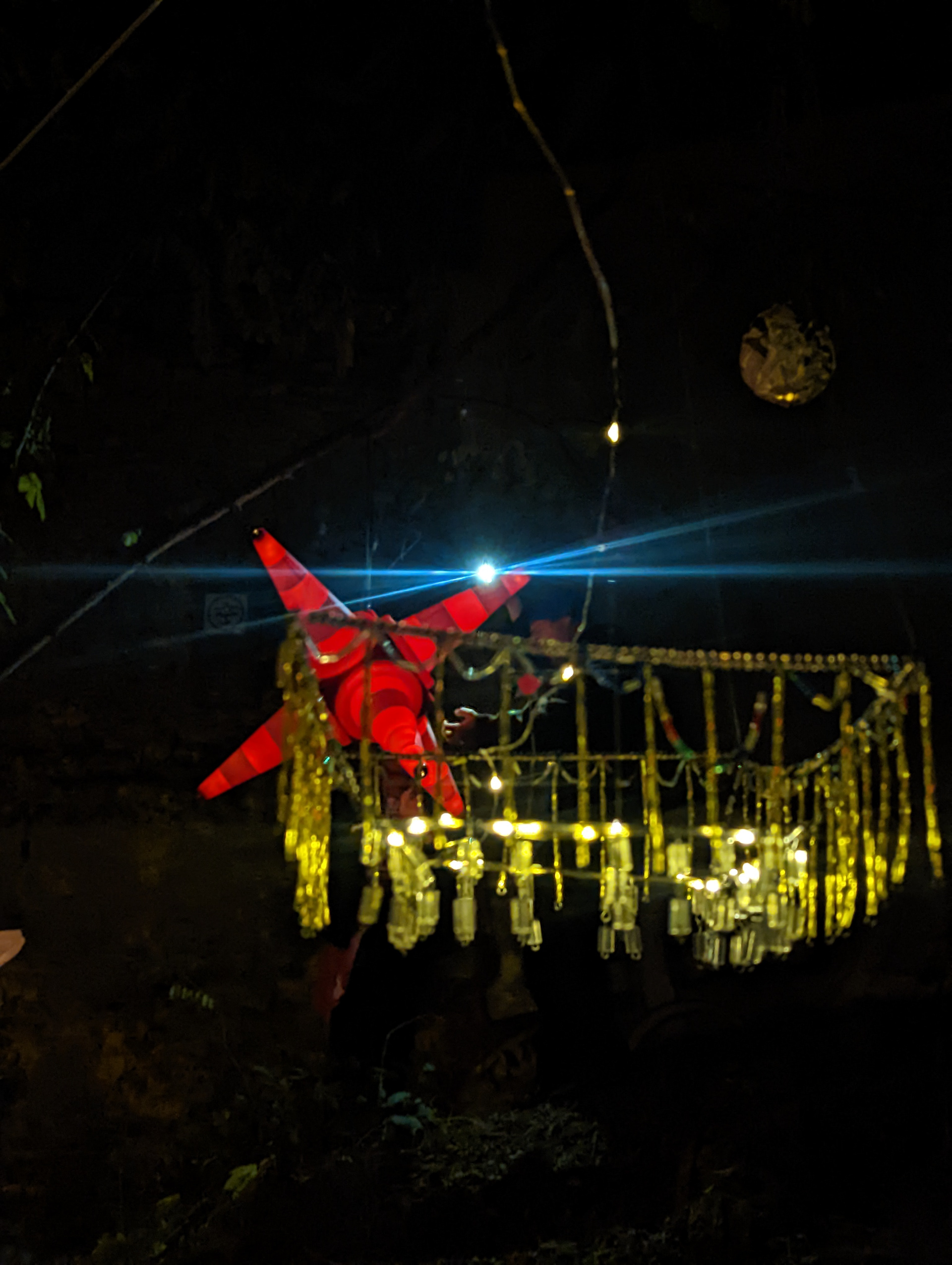
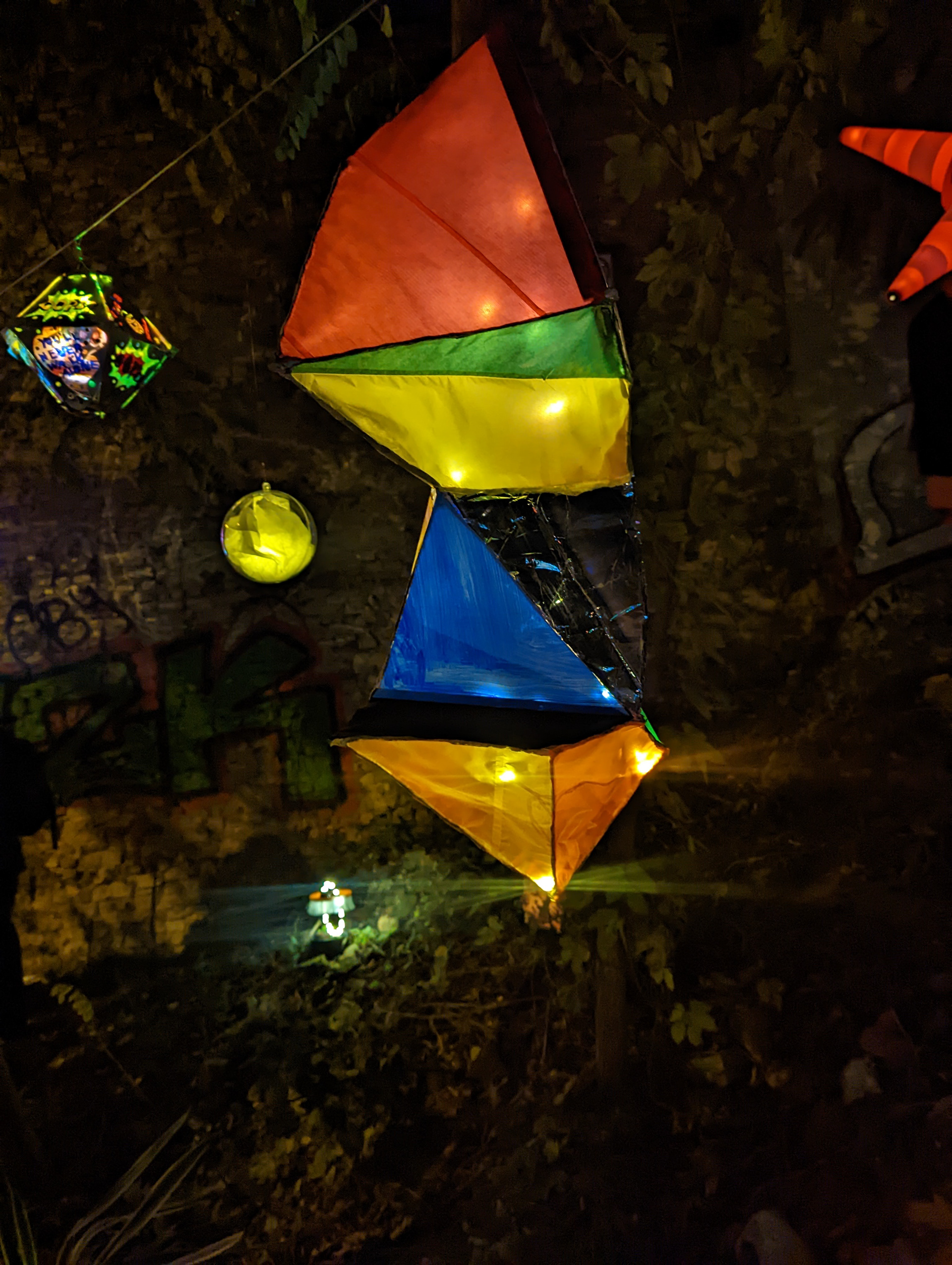
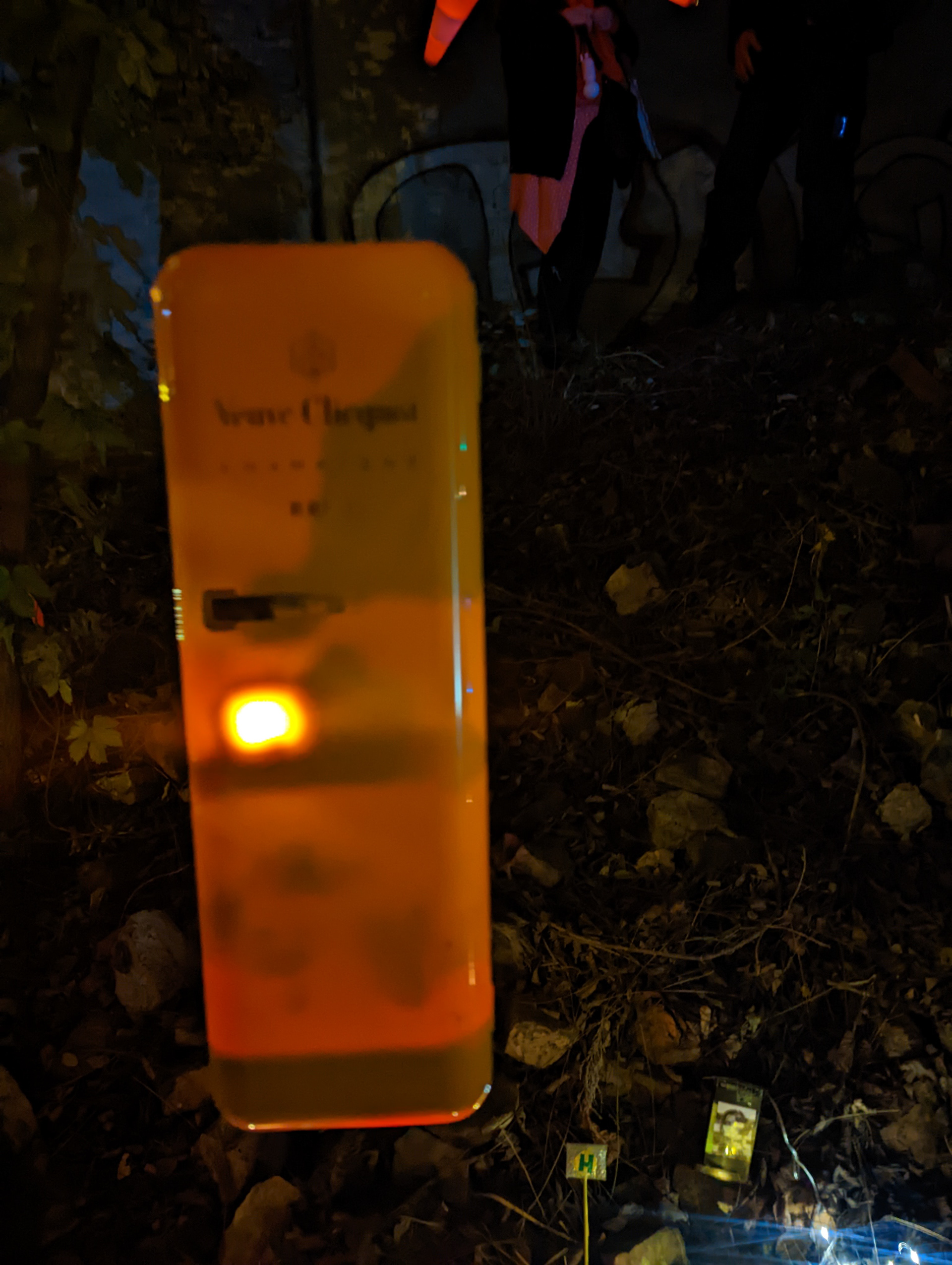
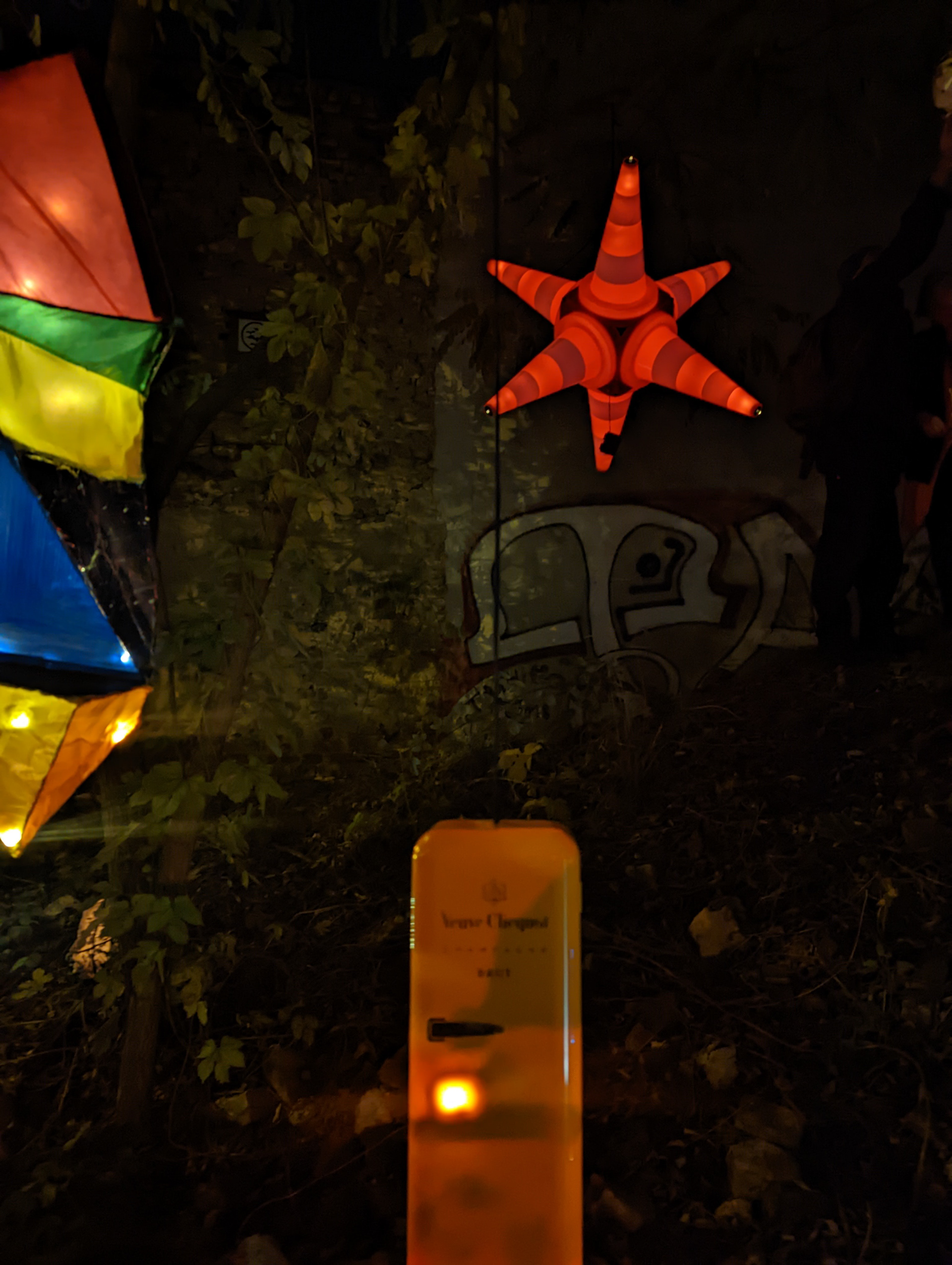
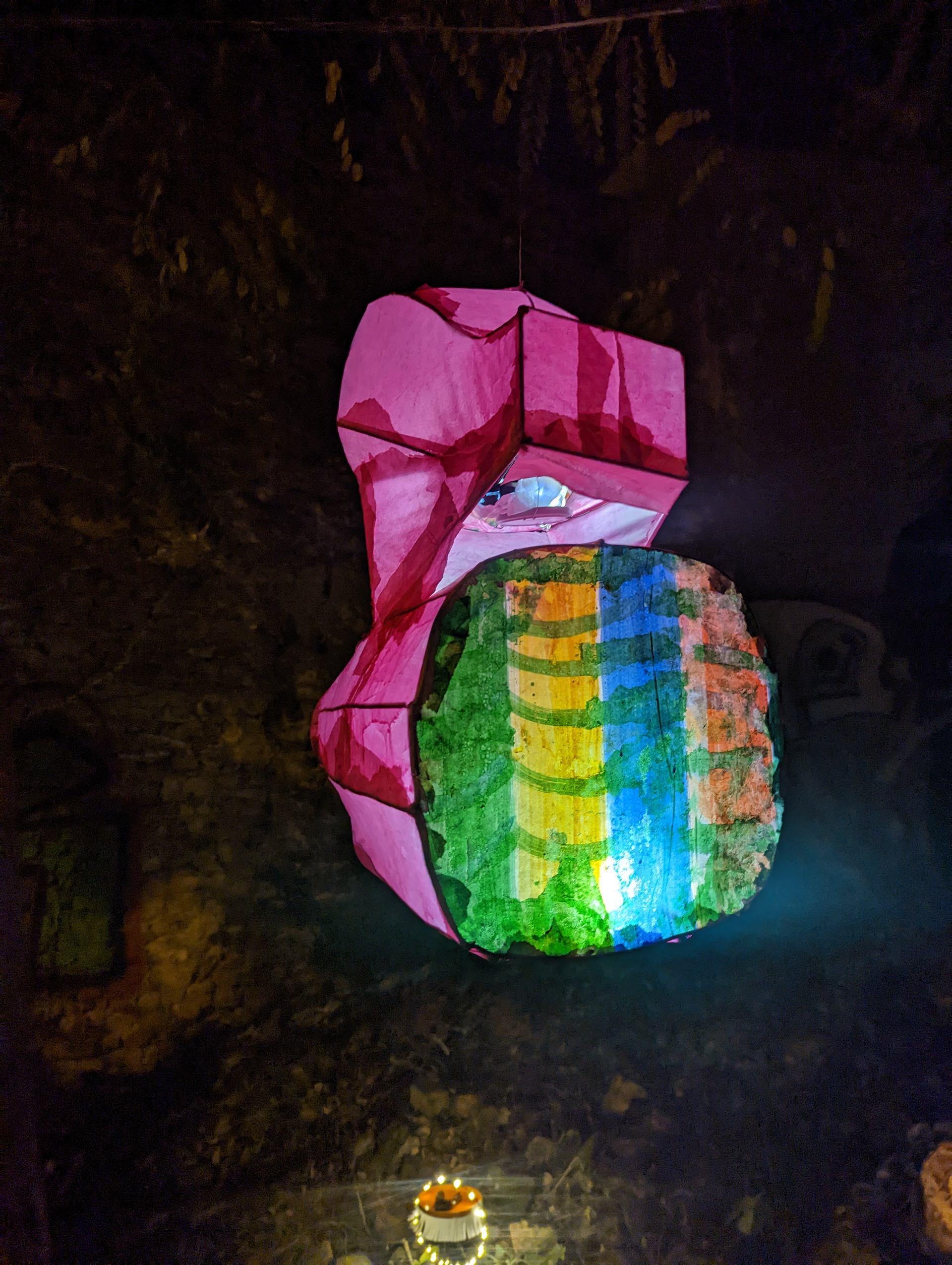
2023 HeiJaLaLand Blooms
More and more people come to spend time on their own and in groups. The work we have done blooms after care and heavy rains. Many other initiatives visit to support, to discuss, and to gain inspiration or their own initiatives.
Summer 2023 - A New Fence - and a new way to share
The City council installs a new fence around HeiJaLaLand, and the neighbourhood initiative receives a key.
We install a code box and send the code to the neighbours. An alternative to Airbnb where the code box indicates that an apartment has been lost to the public housing market.. This key box allows anyone with a code to enjoy this small green biodiverse paradise.
October 2023 First Halloween at HeiJaLaLand
2024- The discussions as to the fate of HeiJaLaLand continue
Will it be replaced by the planned playground, flattened and with 80% of the ground sealed –
biodiversity decimated and a steadily heating neighbourhood?
OR -Will it remain this biodiverse public paradise, cooling the neighbourhood
and offering shelter to human and non-human life?
In the meantime, it does that anyway.
The inaction of the city continues to preserve HeiJaLaLand.
A great example of what neighbourhood initiatives can achieve in this small freedom permitted by slow moving city councils, and what can happen when places are allowed to develop over time rather than conforming to planned design..